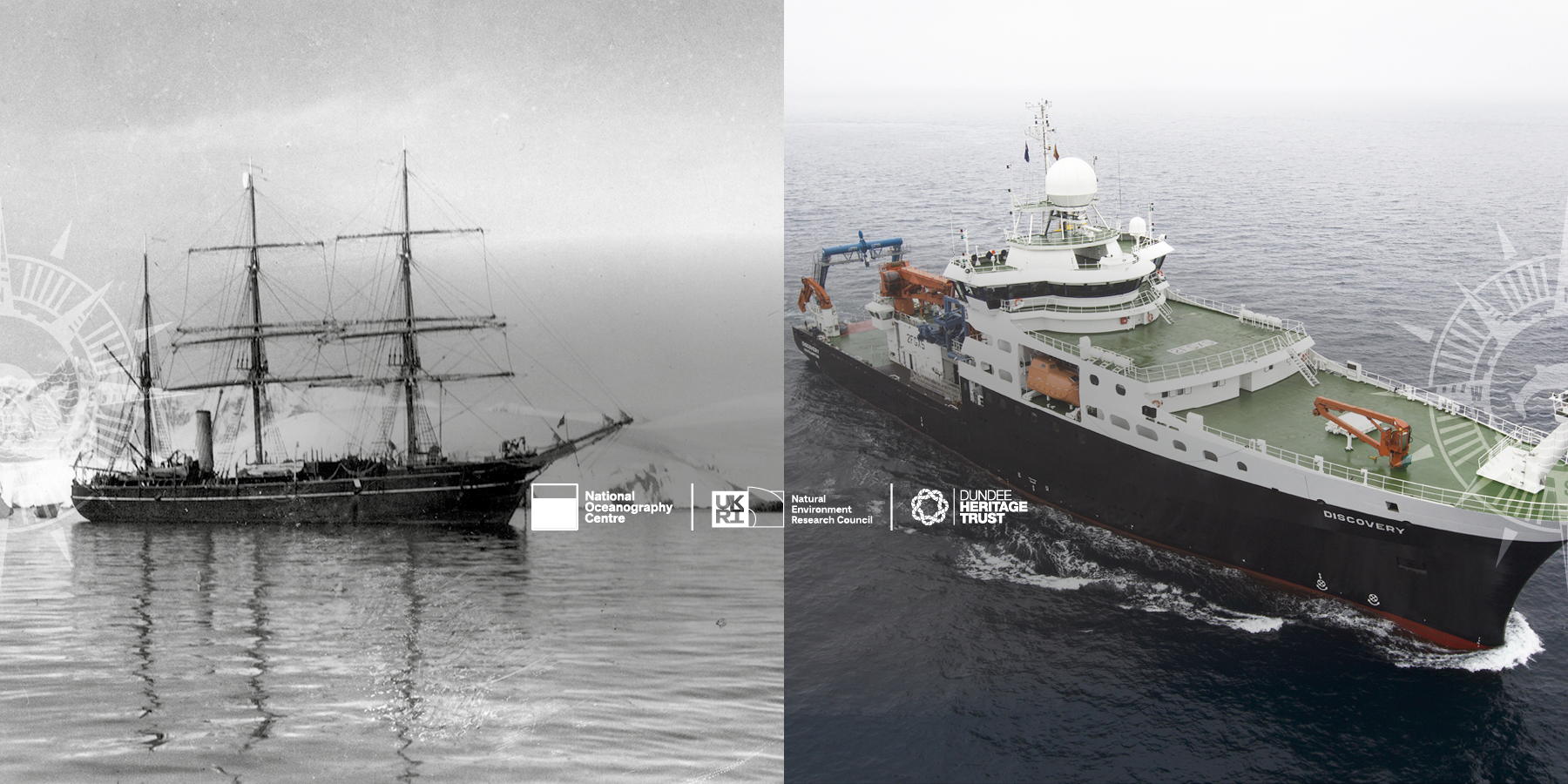
Adopt an Object
A distinctive and heartfelt way to support our heritage
Looking for a special and memorable way to make a difference? By adopting an object today, you will be helping the team at Dundee Heritage Trust to care for our precious Polar and Jute collections. Whether for yourself or as a special gift for a partner, friend, or family member, adopting an object is a unique way to support the conservation of our heritage for generations to come.
Our museums are a tangible link to our past, in which our collections play a vital role, bringing history to life for all to see, hear, and even touch! From Dundee’s jute mills to its polar explorers, each object holds a story that connects us to the past and can help us imagine a brighter future. Our collections are officially recognised by the Scottish Government as being of National Significance, and we are deeply committed to their care and conservation.
By adopting an object, you won’t just receive a symbolic token of appreciation: you will be directly supporting to our efforts to keep these treasures safe for future generations. Your regular gift helps ensure these extraordinary pieces of our heritage continue to educate and inspire, preserving their legacy for years to come.
1. Choose your object
-

Roving Frame
Keeping heritage skills alive at Verdant Works MuseumUnwrapping a pair of jute “Rovies” would have been exciting for a child on Christmas morning. They would have been handmade by their parents from the fibre produced on this machine.
The Roving Frame was used in the earlier stages of jute processing, where the sliver (unspun raw jute) was further combed out and given a slight twist to strengthen the fibre.
This machine was originally used to teach jute spinning and weaving at Dundee College of Technology. People from Dundee, as well as from India, Pakistan and Bangladesh, would have learned the process using the machines we have on display at Verdant Work. It is now regularly used by our volunteers to demonstrate the jute-making process to visitors at Verdant Works.
Adopting this object is one of the ways you can help preserve our important heritage skills.
Read More -

Lt. Skelton's Skis
Vital equipment for exploration and survivalImagine travelling to the coldest place on earth and being told you will be travelling great distances on Skis, having rarely used them before. This was the reality for Lieutenant Reginald Skelton (chief engineer for the Discoveries expedition 1901-04).
The crew on the Discovery first trialled the skis on the ice in the Ross Sea in January 1902: Captain Scott wrote in ‘The Voyage of Discovery’ that ‘We tied the ship to the largest piece of floe-ice we could find, and although this only measure 100 yards across, it proved sufficient for our purpose, which was to make our first attempt to use the Norwegian snow shoes or ski. With very few exceptions, we had none of us used skis before, and consequently our first trial caused vast amusement.’
These skis were made in Canada by Peterborough Canoe Company and the right-hand ski shows evidence of a repair using a tin can, perhaps undertaken in Antarctica, where a policy of ‘make do and mend’ was vital.
This object is ideal for adopters with a sense of adventure.
Read More -

Quant Tulip Skirt
An icon of british fashion, in juteAre you a dedicated follower of fashion, why not adopt this skirt and help us preserve our collection for future generations?
Iconic designer Mary Quant enjoyed experimenting with different materials. In 1963, as part of the ‘Ginger Culture Collection’, she created this knee-length skirt of woven jute.
The jute industry was always looking for ways to market jute including using scientific methods to help soften the jute to make it usable for clothing.
Sadly, the fashion industry did not follow her lead and the trend for jute skirts did not make it beyond the swinging sixties.
Read More -

Emperor Penguin
A first for natural historyThis Emperor penguin is over 110 years old! It was collected as a specimen during the Terra Nova Expedition 1910-1912.
The Discovery expedition 1901-04 was the first expedition to sight an Emperor Penguin rookery and collect the first egg from the species.
They also discovered over 500 species of marine life and compiled 10 volumes of scientific research that helped us learn about the Antarctic continent.
Adoption of this penguin would be ideal for nature lovers of all ages.
Read More -

Lily's Loom
Keeping Heritage Skills AliveThis loom (named after Lily, our much loved and longest-serving machine-hall volunteer of 30 years) was used to weave the spun jute bobbins into cloth and it was originally used to teach jute spinning and weaving at Dundee College of Technology.
People from Dundee as well as from India, Pakistan and Bangladesh would have learned the process using the machines we have on display at Verdant Work. It is now regularly used by our volunteers to demonstrate the jute making process to visitors at Verdant Works.
Adopting this object is one of the ways you can help preserve our important heritage skills.
Read More -

Aurora Australis
The first book published in AntarcticaWhy publish a book in the coldest, driest and windiest continent in Earth?
‘Aurora Australis’ was written, printed and bound by the Polar Party to ward off boredom during the Winter of 1908 as part of Ernest Shackleton’s 1907-1909 expedition to the Antarctic aboard the Nimrod. Produced using broken-up packing crates and lots of imagination, the book features over 100 pages of poems, articles, stories and illustrations inspired by expedition life. The books were gifted to benefactors and friends of the expedition on their return.
The copy in our collections is signed “With kindest regards from the editor, Ernest Shackleton” on the front inlay and has been constructed using what would appear to be the remnants of a soap crate. The crate stencils help collectors identify the various copies – as well as our ‘Soap’, there are also ‘Butter’, ‘Soup and ‘Marmalade’ editions in collections all over the world.
Read More -

Cop Apron
Symbolic of women in the mills across scotlandThe pocket of these heavy jute canvas aprons held cops and bobbins of yarn which were needed for the daily tasks. Women represented 75% of the workforce and therefore thousands of these aprons would have been in existence at one time, sadly very few have been preserved and remain today.
By choosing to adopt this object, you can help us demonstrate how ordinary ‘run of the mill’ items from daily life are equally important treasures in museum collections.
Read More -

Plumley's Goggles
Sledging and discoveriesThese snow goggles belonged to Frank Plumley, stoker on the Discovery 1901-1904. He was a vital crew member as he fed the ships engine with coal.
Frank also proved useful in building and repairing the expedition’s sledges and hardware. He took part in several sledging journeys with Captain Scott to explore and map Antarctica. Snow goggles helped prevent snow blindness, a painful condition caused by the sunlight reflecting off the snow.
Each of the Discovery crew members chose different designs of goggles, as no design was perfect. Unfortunately, the metal edges of Plumley’s goggles would have frozen in the cold, but just imagine the sights they have witnessed.
Read More -

Model Aeroplane
Handcrafted from salvaged jute toolsAre you or do you know someone who is young at heart? Why not consider adopting this object, also a thoughtful way to celebrate a retiral or reminisce with an older loved one.
Making toys from discarded mill waste was a popular activity for mill workers.
This wooden model aeroplane is a very popular with our younger visitors. It was created by artist Sam Samson who crafts objects from weathered wood, salvaged metal and old mill equipment. The main body of the plane is created from a cone used to store spun thread before weaving, the wheels are made from bobbin tops and the decoration around the propeller is taken from pirns.
The artist has inscribed the base with a dedication to Eric Kirkham of the Victoria Spinning Company, who took over Dundee’s Queen Victoria Mill in 1982. The use of mill equipment in the model takes on much more significance when connected to personal memories of a working life.
Read More -

Leitz Microscope
Uncovering climate scienceThis microscope was used on the Terra Nova expedition of 1910-12 and would have helped the scientists in discovering more than 400 previously unknown plants animals and plants.
At that time, the German company Leitz had a worldwide reputation for reliable optical instruments, very important for a detailed scientific study of the Antarctic environment. The company later became known as Leica, and their microscopes are still being used today to capture ground-breaking images in laboratories around the world.
This object would appeal to anyone with an interest in the natural world.
Read More
2. Pick your adoption level
£5 per month / £60 annual donation
Your name on our online Heritage Adopter list
Biannual email updates from our expert curatorial team
£10 per month / £120 annual donation
Your name on our online Heritage Adopter list
Biannual email updates from our expert curatorial team
Free VIP Heritage Adopter lanyard*
Free Annual Pass to the museum displaying your object*
£20 per month / £240 annual donation
Your name on our online Heritage Adopter list
Biannual email updates from our expert curatorial team
Free VIP Heritage Adopter lanyard*
Free Annual Pass to the museum displaying your object*
Special VIP visit including a tour with a member of our heritage team featuring your object*
3. Adopt today!





















